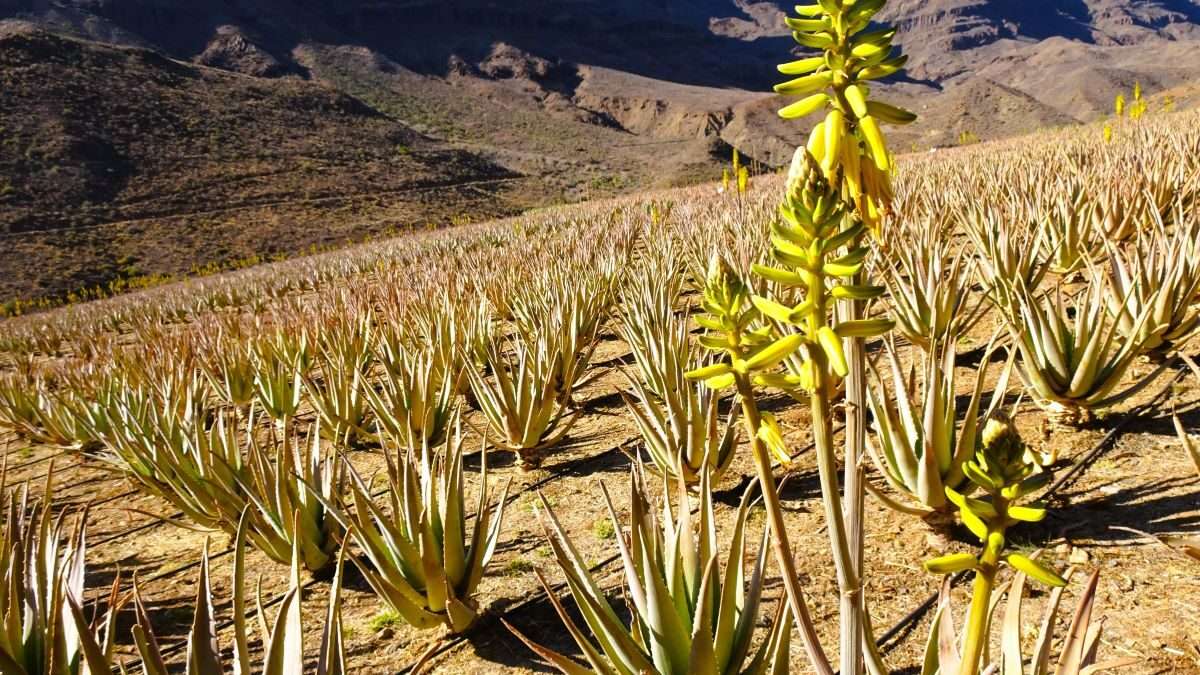The disappointment of missing a trip to Gran Canaria’s capital, Las Palmas, due to a stomach upset was superseded by wonder with an outing to the island’s mountainous region the following day.
The territory is much greener than the south where rain is scarce due to climate change. It’s not surprising campaigners protest annually about the amount of concrete and imitation grass there and the effects on nature.
But back to Mr Word Loft and my sightseeing in more uncommon visitor spots.
First stop, Teror. Bunting, the colours of the town’s flag in yellow, emerald and white crisscross the plaza and flap merrily in the breeze between mature trees.
It was splendid to be in an old-style Canarian place, at last. The Gothic Basilica de Nuestra Señora del Pino with its octagonal tower was the first religious building we had seen in six days of holidaying in Maspalomas.
In the streets, it was refreshing to see locals chatting with cheesemongers, delicatessens, greengrocers, and other food outlets as they shopped. While the gift shops sold stock such as pottery, designer clothes, and contemporary basketware instead of mass-produced goods.
There wasn’t time to visit the museum as it was a packed schedule, and everyone in our group boarded their allotted six-seater people carriers travelling in a convoy to the next destination.
Passing fascinating countryside, we drove through the impressive Valley of a Thousand Palm Trees, and our driver guide brought our attention to banana plantations and a camel farm. The winding road was interesting. Olives, figs and eucalyptus trees grow in vegetation at the sides. The latter isn’t native to the country but provides shade and its deep roots delay soil erosion.
The second smaller location was the village of Tejeda, where the main thoroughfare is pedestrianised. It also has a church and as we ambled to the heart of the community loud music struck up from a loudspeaker system. No one was sure why, but the Spanish tunes enhanced the ambience as we took in the surrounding slopes rich with almond trees, the nuts/seeds a source of the local economy.
Back on the road, it took only a few minutes before reaching a captivating viewpoint. Luck was on our side, as it’s usually misty at that height, but forty-five miles away in Tenerife, Mount Tiede was visible. Its summit, piercing a swathe of clouds, is twice as high as Gran Canaria’s highest peak.
A superior outlook over the volcanic sculpted landscape is spectacular with many prominent rock formations. We saw named monoliths and geological features on the way to Fataga. The most memorable is one known as the Sleeping Man, on which locals have based legends.
Lunch in Fataga was a splendid discovery of typical Gran Canarian cuisine. Starting with local cheeses and chutney, served with bread pieces dipped into mojo and aioli sauces. The restaurant gave a choice for the main course – chicken breast, veal or fish with vegetables. Dessert looked bland but was soothing on the digestive system, especially if suffering from travel sickness after all the twists and bends. Gofio mousse is a typical sweet Canarian recipe made with toasted grains which are eaten with other meals too. At our hotel, I had been sprinkling the powdery form liberally over yoghurt and fruit at breakfast.
Our appetites satisfied, we carried on to an aloe vera plantation.
Exhilarated by the sight of the yellow spider-like cacti set out in rows at the base of a mountain, I was eager to learn more. The Finca Canarias staff explained that the plant is grown organically, and demonstrated the gooey translucent substance oozing from the thick fleshy leaves when cut. The aloe vera content in remedies is as high as 98%, the remainder 2% being a natural preservative. Of course, we couldn’t leave without buying anything, and I’m very pleased with the items I purchased.
The experience was the perfect end to our holiday in Gran Canaria.
Until next time,
Sue. X

